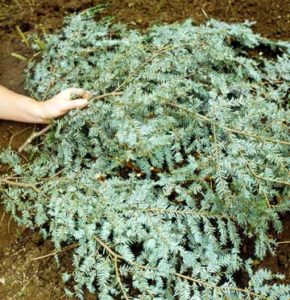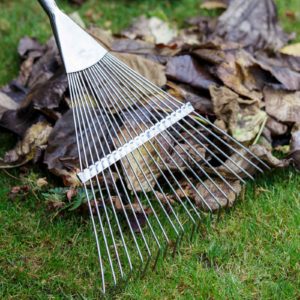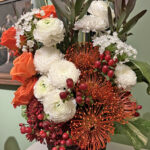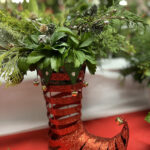Start the month by removing old mulch and any evergreen branches from your perennial beds —but stay out of the beds so you don’t compact the soil. Hold off adding new mulch for a week to allow the soil to warm up. Remove now, by hand, any weeds that wintered over before they get stronger. 
When lawns have dried, remove any debris by raking lawns with a spring-tined rake. Avoid the temptation (and the ads) to apply fertilizer or grass seed. Fertilizing and seeding are best done in the fall when the grass is not competing with annual weeds. New England lawns do well without a spring fertilization, but a thin (1/4 inch) top-dressing with compost will do wonders for it by adding beneficial soil organisms.
When you can walk about the garden without leaving footprints in soggy soil, cut down dead perennials before any new growth begins to show. Add the ‘debris’ of the cleanup to your compost heap. 
While the ground is soft, April is a great time to pull out invasive plants such as Japanese barberry, Japanese honeysuckle and burning bush. Make certain you get as much as the root as possible to prevent it from quickly growing back. Replace these with American natives such as blueberries and itea — spring bloomers with fabulous fall color that lasts longer than burning bush (pictured here)





